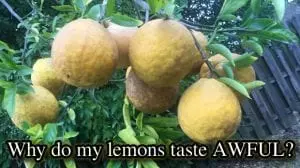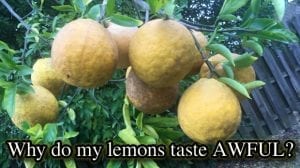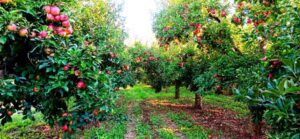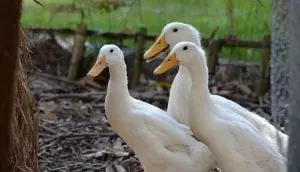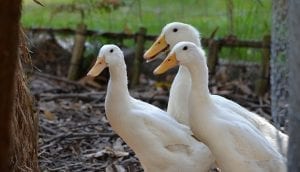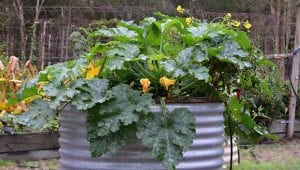If you want your garden to explode with life and “bee” literally buzzing with beneficial animals then you must get a native stingless beehive! Honey bees are often glorified as the main pollinators of the garden and they do deserve our praise!
However, there are several disadvantages and challenges when it comes to keeping European honey bees in an urban backyard, so a much safer and family friendly bee to keep for pollination purposes (especially in a smaller backyard) is your own native bee.
Keeping native bees is not only safer but it gives them a home and helps grow these important insects because without these guys giving the honey bee a hand to pollinate flowers, the world’s food production would be in big trouble!
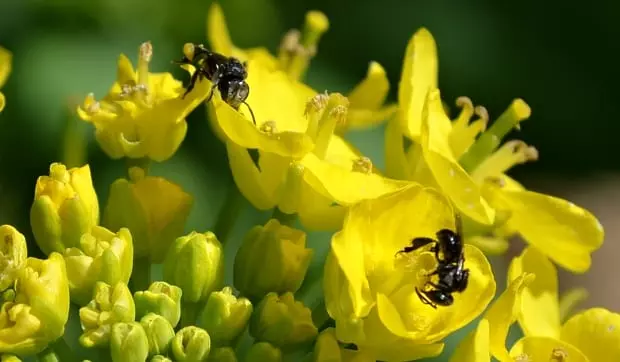
Native bees collect pollen from bok choy flowers (image above)
Honey bee in decline – the rise of the native bee
Unfortunately, the honey bee is in decline around the world due to parasites, pests, and the indiscriminate use of insecticides so, God forbid, if the day ever comes when the honey bee is no more we really will need an alternative to crop pollination. Parasites, diseases, and predators do affect native bees too but control measures are easier and management of a native bee hive is certainly much less than a honey bee.
There are thousands of different species of stingless bees around the world. In Australia one of the most common native stingless bees people keep is called Tetragonula carbonaria or once commonly called (Trigona carbonaria). They are quite small compared to the honey bee at about the size of a standard house fly and can be easily overlooked in the garden.
In their natural environment, the Australian native stingless bee usually makes its home/hive in hollowed-out logs, trees, or rock faces. This makes keeping them rather simple because replicating a natural native beehive is as easy as building a small wooden box with a single small hole for entry/exit. You can buy them on eBay.
Honey from stingless native bees
Can native stingless bees produce honey for human consumption? Yes, is the short answer…
Stingless native bees store honey differently than honey bees do and their honey is different too. Firstly, native bees don’t make a lot of honey and it can take around 12 months before they build enough honey worth harvesting (less than 1 kilogram per year). Native bee honey has a different taste to honey bee honey – it’s actually more like a syrup and to me it tastes like a thick port or fortified wine. Native bee honey is delicious drizzled over ice-cream or waffles but I wouldn’t say it’s a taste sensation or something wondrously unique – that’s just my opinion.

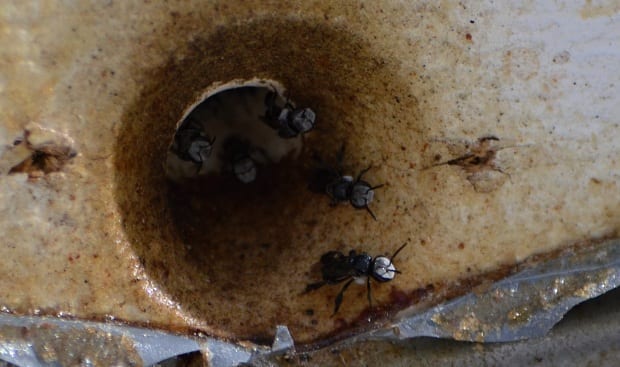
Entry/exit hole native bee hive note the honey crystals collection (image above)
Nutrition wise, I wouldn’t think there’s much difference between native bee honey and the European honey bee’s but some do believe native bee honey is healthier – it probably isn’t. Personally, I have not been able to find much information analysing the nutritional properties of native bee honey compared to standard honey. I suppose nutritional value also would be influenced by what the bees are mostly gathering the pollen from? Regardless, my thoughts are honey is basically honey and there’s probably no significant difference between native or European bee honey nor where it was gathered – of course, I could be wrong.
However, most native bee keepers don’t keep them to harvest the honey (not routinely anyway) because harvesting isn’t as simple as spinning the honeycombs from a honey bee hive and the quantity is hardly worth the effort. Plus, apparently, native bee honey doesn’t keep as well as regular honey does; that is, its shelf life isn’t as good as honey bee honey making it not seriously commercially viable. Having said that, there are some small producers of native bee honey who do farm and sell it at a premium.
The native bees store honey away from the brood, which is usually located central to the hive. Honey is stored in pods made from resin or gum and are usually gathered in groups around the corners of the hive or in one bulk area.
When harvesting the honey or splitting the hives care needs to be taken to ensure honey isn’t inadvertently leaked or left dribble into the hive or through the brood. It has been said just one teaspoon of honey left loose in the hive can kill the whole brood and therefore the whole colony!
Manmade native bee hives usually have small countersunk holes in the base of the hive to allow for any spilt honey to ooze out, particularly after harvest or hive splitting. The hive is usually propped up for a few days after hive splitting by using a small spacer under the hive to allow any leaked honey to escape.

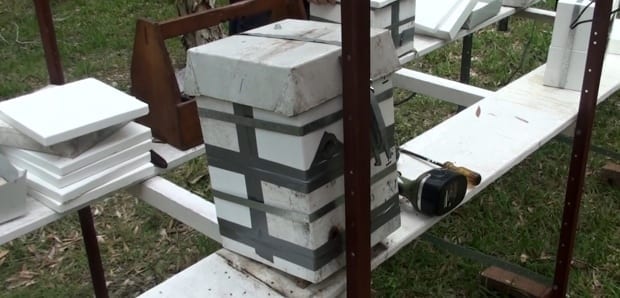
The old and new hives together after the splitting process placed on a lean to allow split honey to escape (image above)
Splitting native bee hives and horizontal vs vertical designs
Splitting a native bee hive is a way to get two hives from one and is only done if the hive is strong enough. That is, the brood in the hive should be large enough to endure a split so both halves have a good chance of surviving because if the brood is too small one or both halves may die.
From what I have seen, a native bee hive with a brood the size of an orange or bigger has the best chance of survival and turning into two hives. Anything smaller and the hive may not have enough food to sustain the new hive or enough queen cells to re-queen and thrive.
Hive splitting is a rather simple process and is just a matter of separating an existing hive into roughly two equal parts. Some native bee producers use a knife to cut through the brood and others prefer to gently pull the hive apart and let it naturally separate – both methods seem to work well.

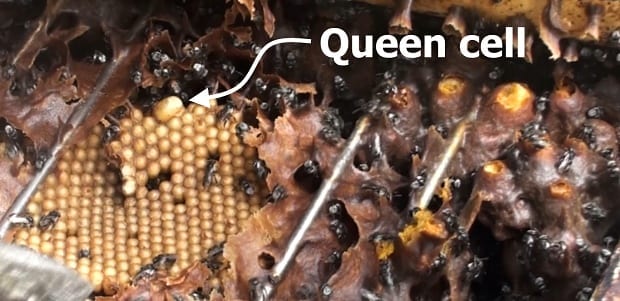
However, there is some argument as to whether a horizontal or vertical split hive is best. Hence the two main different native beehive designs: the standard horizontal or the newly emerging vertical. It’s interesting because it’s my understanding the brood (being where the new bees are produced) is always working in a cycle of about 50 days and this is evident by a gap of roughly 10 mils where the old egg chambers are being cleaned out and new ones prepared.
This “gap” supposedly works its way from the bottom to the top and restarts over again. It’s for this reason, advocates of the new vertical design believe horizontal splitting is less effective than vertical because if the hive is pulled apart or split at the wrong time one half might be left with much less brood than the other. If one half is therefore weakened with hardly any brood it may die because it doesn’t have the bee population to rejuvenate the new hive.

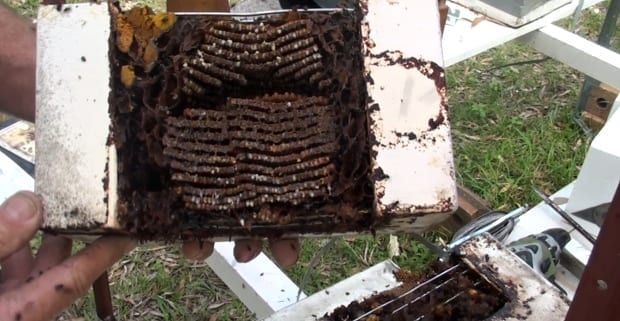
A cross section of the brood taken during the vertical splitting process (image above)
On the other hand, if a stingless beehive is split vertically the brood is cut evenly down the middle meaning it doesn’t matter when in the cycle the hive is split because there still will be two equal halves.
Also, there’s a strong argument that vertical hive splitting generates less disturbance and results in less honey seepage than horizontal splitting because the process of vertical hive splitting is more visual and less guess when pulling apart or cutting through the brood. A more precise split means most honey pods can be avoided making the split much cleaner.
The measurements for a vertical design manmade native beehive displayed in this article are:
- Inner dimensions of the brood box – approximately 150 mm X 150 mm X 145 mm deep;
- Sides and base – are 50 mm thick cypress;
- The top is 25 mm cypress plus 25 mm Styrofoam for insulation; and
- A tin roof to cover for extra weather protection.
Native bee hives can be made out of any wood or even other materials like styrofoam but wood is the most common and it's a good idea to use a wood, which is less attractive to termites!
Acquiring a stingless native beehive
Although native bee keeping has been around for a long time it is still relatively new and not well known compared to the honey bee keeping. You might have to do a bit of digging to find a local native bee keeper who also makes and sells them.
Expect to pay anything from $150 – $800 for a good native beehive depending on if it’s live (or just the box) or how established the hive may be and even its health. Plus, different hive designs and materials will play a role in cost.
The hives are transported to the new location sealed up and is usually left in the new location for about 24 hours before opening the seal and allowing the bees to do their thing. The reason this is done is to allow for the bees to reorientate to their new home and area otherwise they might leave the hive and not find their way back.

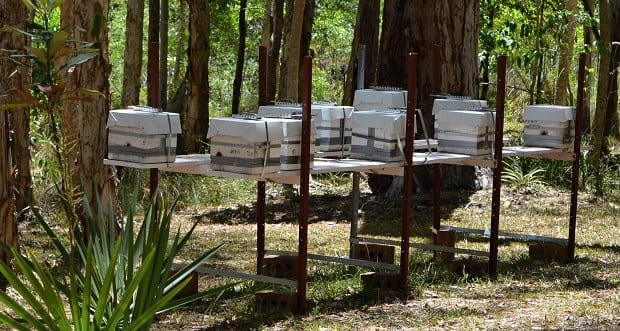
Native stingless bee hives on a star picket stand (image above)
Hiring vs buying native stingless bees for your property
You can hire instead of buy native bee hives or even provide a service for a bee keeper to expand their hives by offering your place as a home. In fact, that’s exactly what I do! My uncle is the bee expert but he has exhausted all the space on his own property to keep his ever expanding bee hobby so I have agreed to let him keep some hives at my place. It’s a “win win” because he gets to expand his bee empire and I get free bees to pollinate my garden!
However, if you prefer to buy your very own hive that’s good too because it encourages more people to keep native bees and grow them. Keeping native bees is no trouble at all and they require practically no maintenance plus they can look quite trendy and attractive in the backyard or become a real BBQ conversation starter.

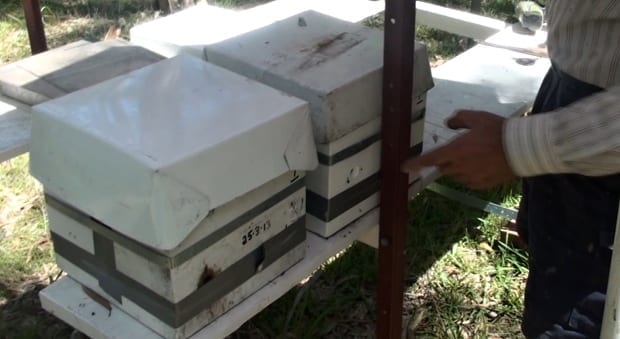
Two native bee hives made from one (image above)
Incidentally, my Uncle does intend to start selling native bee hives once he has built up his stocks so for more information keep an eye on our forum SSC and here on SSM for updates.
How many hives can you keep in a standard backyard?
My uncle keeps dozens of native beehives on his standard sized suburban block; however, the bees will fight and kill each other if the competition for food is high. Therefore, keeping a few native beehives in a normal sized backyard (around 600 square metres) in a standard inner city neighbourhood is ok but any more and you really should know your stuff or it could get messy!
Remember, native bees are in competition with other native bees and honey bees (plus other insects and birds) for food so overloading the area with too many native bee hives is just the same as overgrazing a paddock with too many sheep.
Conclusion
Native stingless bees have been a prized food to aborigines for thousands of years and now they are a valuable asset in the modern day suburban backyard. With the decline in honey bees around the world it’s important its tiny little stingless cousin is encouraged to survive and multiply.
If you are into gardening or just into nature get yourself at least one native beehive for your property and do the world a favour one beehive at a time…
Also, if you'd like to read more about the basics of vegetable gardening I'd like to personally refer you to this article "How to Start a Vegetable Garden" by Jane & Mike from Yard Day. I'm always happy to collude with fellow food gardeners and help spread their great work in promoting healthy living and lifestyle.
Comments are welcome below and/or join in the conversation on our forum!
Mark Valencia – Editor SSM
You don’t have to be self-sufficient in everything… Just be self-sufficient in something; and
Look, and see the Earth through her eyes…



